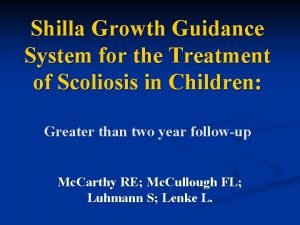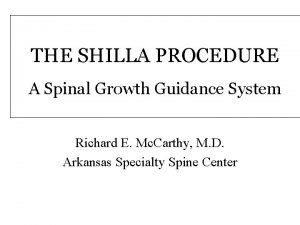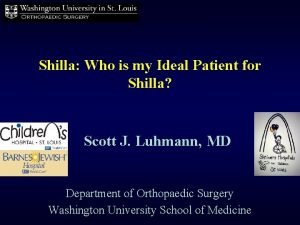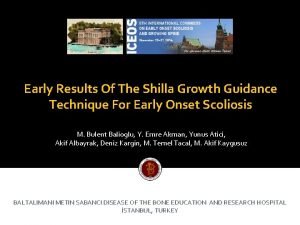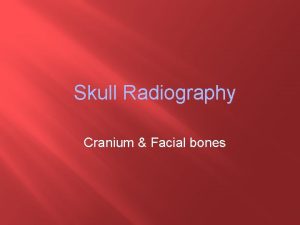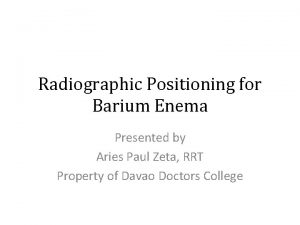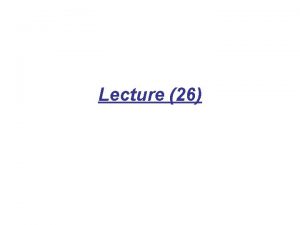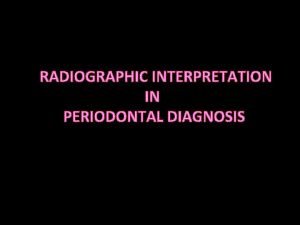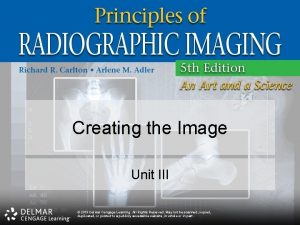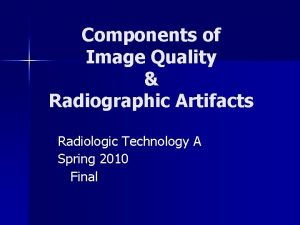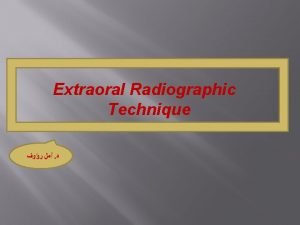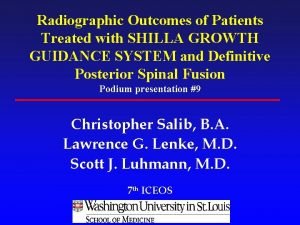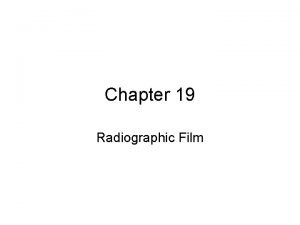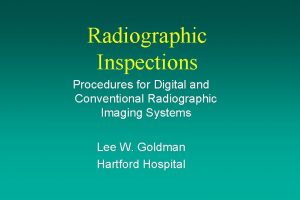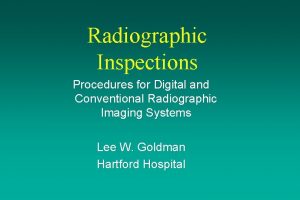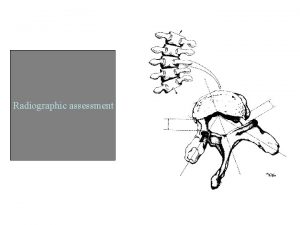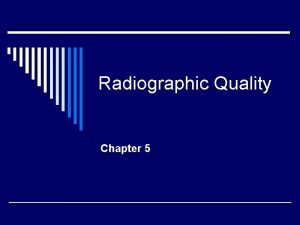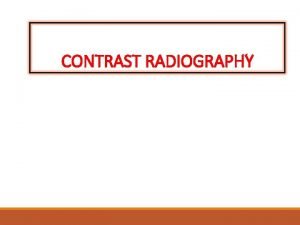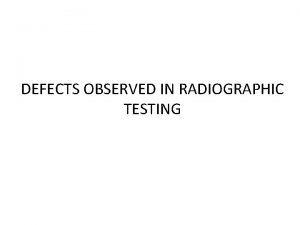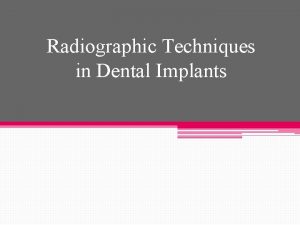Radiographic Outcomes of Shilla Growth Guidance System and
















- Slides: 16

Radiographic Outcomes of Shilla Growth Guidance System and Traditional Growing Rods through Definitive Treatment Scott J. Luhmann, MD June C. Smith, MPH Ann Mc. Clung, RN Lynn Mc. Cullough Richard E. Mc. Carthy, MD George Thompson, MD Growing Spine Study Group

Introduction • Luhmann, Mc. Carthy (2013; in submission) – 19 Shilla vs 6 GR (unmatched; retrospective) FDA data – >1 yr f/u Shilla GR Initial Cobb 70 68 Post-index Cobb 22 32 Final Cobb % improvement 41 -53% 41 -57% Initial T 1 -S 1 28. 7 cm 29. 0 cm Final T 1 -S 1 32. 9 cm (+4. 2 cm) 34. 0 cm (+5. 0 cm) 0. 14 cm/month 0. 11 cm/month 1. 5/patient 7. 0/patient “Growth” T 1 -S 1 Reoperations

Introduction • Andras et al (2013; in submission) – 37 Shilla vs 37 GR (matched) from GSSG – >4 yr follow-up Shilla GR Initial Cobb 69 72 Post-index Cobb 26 38 Final Cobb 45 (-24) 36 (-36) p=0. 019 Initial T 1 -S 1 29. 0 cm 26. 5 cm Final T 1 -S 1 35. 4 cm (+6. 4 cm) 35. 2 cm (+8. 7 cm) p=0. 013 2. 8 cm 7. 4 cm 2. 8/patient 7. 4/patient “Growth” T 1 -S 1 Reoperations

Study Purpose • To compare the radiographic outcomes of patients who had undergone: – Shilla Growth Guidance System – Traditional Growing Rod (GR) treatment for management of early-onset scoliosis through definitive treatment

Methods • A multicenter early-onset scoliosis (EOS) database (GSSG) was queried to identify patients who met the following criteria: – Surgical treatment with Shilla or GR – Undergone definitive treatment of the spinal deformity – Patients were matched by • Age • Pre-operative curve magnitude • Diagnosis

Methods • The study population: 36 patients – 18 in Shilla group – 18 in GR group • Diagnoses – Idiopathic – NMS – Syndromic – Congenital Shilla GR 8 7 3 0 9 7 1 1

Methods • Age at initial surgery was: – Shilla 7. 9 y – GR 7. 7 y (NS) • Length of follow-up after initial surgery: – 6. 1 y for Shilla – 7. 4 y for GR (NS)

Results • Definitive treatment: – Posterior spinal fusion: 15 Shilla, 17 GR – Implant removal: 3 Shilla – Completion of lengthenings: 1 GR • Overall mean number of surgeries: – Shilla: 3. 1 (range: 1 -7) – GR: 9. 3 (range: 4 -24), including 5. 8 lengthenings

Results • Total complications: – Shilla: 20 (mean 1. 1/pt) – GR: 26 (mean 1. 4/pt) (NS) • Complication type – #1: Implant-related (Shilla 13; GR 11) – #2: Infection (Shilla 5, GR 7)

Results 70 63 Major Coronal Cobb 60 50 58 37 34: -46% 40 30 NS 30: -48% 20 21 10 NS p<0. 05 0 Initial Post-Index Last F/u GR Shilla

Results • T 1 -T 12 length (mean) – Initial • Shilla: 195 mm • GR: 185 mm – Last follow-up • Shilla: 247 mm (52 mm increase) • GR: 233 mm (48 mm increase) (NS)

Results • T 1 -S 1 length (mean) – Initial • Shilla: 316 mm • GR: 292 mm – Last follow-up • Shilla: 406 mm (90 mm increase) • GR: 378 mm (86 mm increase) (NS)

Summary • Reoperations: 3 x higher in GR group (3. 1 vs. 9. 3); 5. 8 were lengthenings • Complications: 1. 1 -1. 4/pt (NS) • Major Cobb: 46 -48% improvement (NS) • T 1 -T 12: 48 -52 mm increase (NS) • T 1 -S 1: 86 -90 mm increase (NS)

Andras Study Comparison This Study Andras Shilla GR Cobb Initial 69 72 58 63 Cobb Post-index 26 38 21 37 Cobb Final 45 (-24; -35%) 36 (-36; -50%) p=0. 019 30 (-28; -48%) 34 (-29; -46%) NS T 1 -S 1 Initial 29. 0 cm 26. 5 cm 31. 6 cm 29. 2 cm T 1 -S 1 Final 35. 4 cm (+6. 4 cm) 35. 2 cm (+8. 7 cm) p=0. 013 40. 6 cm (+9. 0 cm) 37. 8 cm (+8. 6 cm) NS 2. 8 cm 7. 4 cm ----- 2. 8/patient 7. 4/patient 3. 1/patient 9. 3/patient “Growth” T 1 -S 1 Reoperations

Conclusion • In this analysis of EOS patients (matched by age, diagnosis and major Cobb magnitude) who had completed scoliosis treatment, the final radiographic outcomes (and changes) and complications (implant-related and infection) between the Shilla and GR groups, were not statistically different. • The main differences between the groups was the 3 -fold difference in overall surgeries between the two groups.

Thank You
 Shilla development
Shilla development Shilla growth guidance system
Shilla growth guidance system Lingualized occlusion vs balanced occlusion
Lingualized occlusion vs balanced occlusion Examples of indirect guidance in a classroom
Examples of indirect guidance in a classroom Shilla procedure
Shilla procedure Shilla technique
Shilla technique Orbitomeatal line
Orbitomeatal line Ventral decubitus position
Ventral decubitus position 8:1 grid
8:1 grid Types of darkroom entrance
Types of darkroom entrance Labial mounting method
Labial mounting method Imagen de box bony
Imagen de box bony Radiographic film
Radiographic film Lamina dura
Lamina dura Radiographic film
Radiographic film Kink marks artifact
Kink marks artifact Extraoral radiographic techniques
Extraoral radiographic techniques
